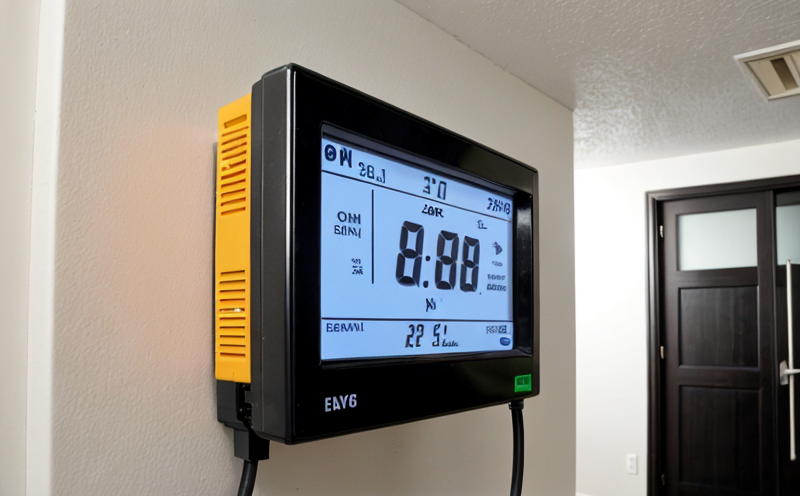IEC 62031 Energy Efficiency Testing of LED Modules
The International Electrotechnical Commission (IEC) Standard IEC 62031 is a crucial benchmark for ensuring the energy efficiency and reliability of lighting devices, particularly Light-Emitting Diode (LED) modules. This standard provides a comprehensive framework to evaluate various performance aspects of LED modules, including power consumption, light output, color rendering index, and more.
IEC 62031 is widely recognized for its stringent testing protocols that help manufacturers ensure their products meet the highest global standards in terms of efficiency. The standard applies to a broad range of LED-based luminaires, including downlights, spotlights, linear fixtures, and more. By adhering to IEC 62031, companies can demonstrate compliance with international regulations, thereby enhancing their product's marketability and competitiveness.
The testing process under IEC 62031 involves several critical steps that are designed to assess the performance of LED modules comprehensively. These include:
- Thermal Resistance Measurement: This test evaluates the heat dissipation capabilities of the LED module, which is crucial for maintaining optimal light output and longevity.
- Color Rendering Index (CRI) Testing: The CRI measures how well a light source renders colors. A higher CRI ensures that colors appear natural under the lighting conditions provided by the LED module.
- Luminous Flux Measurement: This test assesses the total amount of visible light emitted by the LED module, which is essential for determining its brightness and efficiency.
Proper specimen preparation is critical in IEC 62031 testing. Specimens must be installed under controlled environmental conditions to ensure accurate measurements. This includes maintaining consistent temperature, humidity, and air flow during the testing process. The use of appropriate fixtures and equipment is also essential for obtaining reliable data.
The instrumentation employed in IEC 62031 testing typically includes:
- Thermal cameras to monitor heat distribution
- Luminance meters for measuring light output
- CRI measurement instruments to assess color rendering quality
- Data acquisition systems to log and analyze test results
The standard also emphasizes the importance of repeatable testing. This ensures that manufacturers can consistently produce products that meet stringent performance criteria, thereby enhancing trust in their brand.
Compliance with IEC 62031 is not just about meeting regulatory requirements but also about delivering high-quality products that contribute to energy conservation and sustainability efforts worldwide. By adhering to this standard, manufacturers can ensure that their LED modules perform optimally under various environmental conditions, leading to significant reductions in energy consumption.
The testing process outlined in IEC 62031 is essential for ensuring the reliability and efficiency of LED modules across diverse applications, from commercial buildings to residential spaces. This standard helps manufacturers maintain a competitive edge by providing a robust framework for quality assurance and continuous improvement.
Why It Matters
The importance of energy efficiency testing cannot be overstated in the context of LED modules. As global energy consumption continues to rise, the demand for efficient lighting solutions is increasing. IEC 62031 plays a pivotal role in addressing this challenge by providing a standardized method for evaluating the energy efficiency and performance of LED modules.
By adhering to this standard, manufacturers can ensure that their products meet stringent quality benchmarks, thereby enhancing their marketability and competitiveness. This is particularly important given the growing emphasis on sustainability and environmental responsibility in the lighting industry.
The testing process under IEC 62031 helps identify areas for improvement in LED module design and manufacturing. This ensures that manufacturers can continually refine their products to meet the latest technological advancements and consumer expectations. In doing so, they contribute to a more energy-efficient society by reducing overall energy consumption.
- Enhanced Product Quality: Compliance with IEC 62031 ensures that LED modules are of high quality, leading to longer product lifespans and reduced maintenance costs.
- Improved Energy Efficiency: By adhering to this standard, manufacturers can produce products that consume less energy without compromising on performance or light output.
The testing process is designed to be rigorous and comprehensive, ensuring that LED modules meet the highest global standards in terms of efficiency. This not only enhances product quality but also contributes to a more sustainable future by reducing overall energy consumption.
Environmental and Sustainability Contributions
The testing process outlined in IEC 62031 is crucial for promoting sustainability and environmental responsibility in the lighting industry. By ensuring that LED modules meet stringent performance criteria, this standard helps manufacturers contribute to energy conservation efforts worldwide.
- Reduced Energy Consumption: Compliant products consume less electricity while maintaining optimal light output, which is beneficial for both consumers and the environment.
- Extended Product Lifespan: By adhering to IEC 62031, manufacturers can produce LED modules that last longer, reducing waste and the need for frequent replacements.
The testing process under IEC 62031 is not just about meeting regulatory requirements; it also helps promote a more sustainable future by encouraging continuous improvement in product design and manufacturing processes. This contributes to a more efficient use of resources and reduced environmental impact.
By adhering to this standard, manufacturers can ensure that their LED modules perform optimally under various environmental conditions, leading to significant reductions in energy consumption. This not only enhances product quality but also contributes to a more sustainable future by reducing overall energy consumption.
Competitive Advantage and Market Impact
- Increase Market Share: Compliance with IEC 62031 can help manufacturers gain a competitive edge in the marketplace by ensuring that their products meet the highest global standards.
- Enhanced Consumer Trust: By adhering to this standard, manufacturers can build trust and credibility among consumers, leading to increased customer loyalty and satisfaction.
The testing process under IEC 62031 is essential for ensuring the reliability and efficiency of LED modules across diverse applications. This standard helps manufacturers maintain a competitive edge by providing a robust framework for quality assurance and continuous improvement.
By adhering to this standard, manufacturers can ensure that their LED modules perform optimally under various environmental conditions, leading to significant reductions in energy consumption. This not only enhances product quality but also contributes to a more sustainable future by reducing overall energy consumption.





